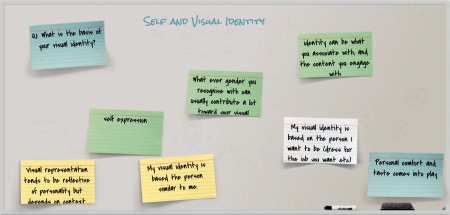Attendance was disappointing this week but we continued with our visit to Virtual Ability Island (VAI) nevertheless. We all teleported to the Cabana Classrooms where Gentle Heron, founder of the Virtual Ability community, introduced her colleagues Eme Capalini, Stepinwolf Darkstone and Carla Broek. Eme is Vice President of Development for Virtual Ability. SL gives her a creative work outlet and a place to make friends. She says that logging in is like coming home. Stepin has been in SL since 2007 and joined the group that eventually became Virtual Ability where he now manages a virtual apartment complex on a voluntary basis. Carla is from Belgium and just celebrated her 12th rez day (as SL birthdays are known). She was drawn to SL by the opportunity to explore creative work like photography and community. She has created her own world inspired by the English countryside where people can relax and enjoy the peace and quiet. Gentle explained that she had been an educational researcher before being medically retired by multiple sclerosis.

Student Rebekah Majesty with Eme Capalini, Gentle Heron, Stepinwolf Darkstone and Carla Broek at Virtual Ability.
Speaking and using text (as is the custom in VAI to support those who are deaf) she describes VAI as an international cross-disability peer support community with over 1,000 members. ‘Cross-disability’ means that members who have disabilities may have a physical, a mental or emotional or developmental disability, or a sensory disability. Many have multiple disabilities. The community offers peer-to-peer understanding, support and education because sometimes it is important to communicate with people who are most likely to understand the issues, concerns and point of view. But the community is not exclusively disabled. About one-quarter of the members do not (yet!) have disabilities. They are known as TABs, Temporarily Able Bodied. They may be a parent, spouse, child or friend of a person with a disability; a professional or non-professional caregiver; an academic researcher; medical professional or an educator. The community has been in Second Life for over 11 years – and won the first Linden Prize in 2009 for a project that had a tangible impact on the real world. It is also one of the original Community Gateways into SL, authorised by Linden Lab, so is recognised well beyond its own community.
VAI is supported by Virtual Ability Inc, a US nonprofit corporation. The community assists people with all kinds of of disabilities to enter and thrive in virtual worlds like SL. It also offers various education and entertainment activities daily, encouraging members to explore all that virtual worlds have available. On this island the community provides educational exhibits and displays, health information, information on research opportunities and details of over 120 disability peer support communities identified in SL so far. The community also hosts the Cape Able Art Gallery and Cape Serenity Library.
The population with disabilities is the largest minority in the world and is the most varied. VAI members are neither geographically proximate nor culturally similar. In fact they embrace diversity. This requires a group value of respect and accommodation. The other important value is an emphasis on Ability and not DISability.
The students joined the discussion with some interesting questions. Hummish opened by asking about protecting oneself from cyber bullying, online theft and so on. Gentle replied that there is little help from SL itself but the community provides help as it can by banning griefers. Carla told us that there is a reporting tool provided by Linden Lab but it is not a direct support. John told of the retired Miami Dade police officer who headed up security in Virtual Dublin and kept the community safe and peaceful.
Coldteosies asked about anonymity and whether virtual friends met IRL. Gentle said that people may retain as much anonymity as they wish. For instance she had met all three colleagues IRL and they were exactly the same as the people she knew from SL! Stepin added that he was glad to find that Gentle was very much Gentle IRL. John added that he had many many friends in SL, some of whom he eventually met IRL and some not.
Aestheticant asked if people who are differently abled need extra digital protections, within the broader sense of digital citizenship. Gentle explained that while VAI did not have a constitution it has an informal set of principles that are enforced, along with the SL Terms of Service. Stepin added that on Cape Heron they have a covenant and a Rental Agreement which spell out a lot of expectations.
This led on to some interesting observations about how we might identify with our avatars (which also emerged during Class 6 last week) and how that can affect behaviour. Some of us have avatars that look like ourselves IRL but Rebakah said hers doesn’t look anything like her. Gentle suggested that the sense of embodiment takes a while to develop and explained the concept of mirror neurons – the same parts of your brain fire when you see an avatar doing something as if you were doing with your physical body. We also learned that some people on the autism spectrum find SL a comfortable place to meet others because they can retain control of their interactions. Some of them don’t use human avatars but use, furry animals, fruit, or even a simple metal sphere.
Eme shared some links to VAI’s projects:
Gentle offered explanatory notecards to us, giving more details about VAI and the community and invited everyone to visit again anytime we wished. John thanked Gentle, Eme, Stepin and Carla for hosting us and being so generous with their time, knowledge and experience.


